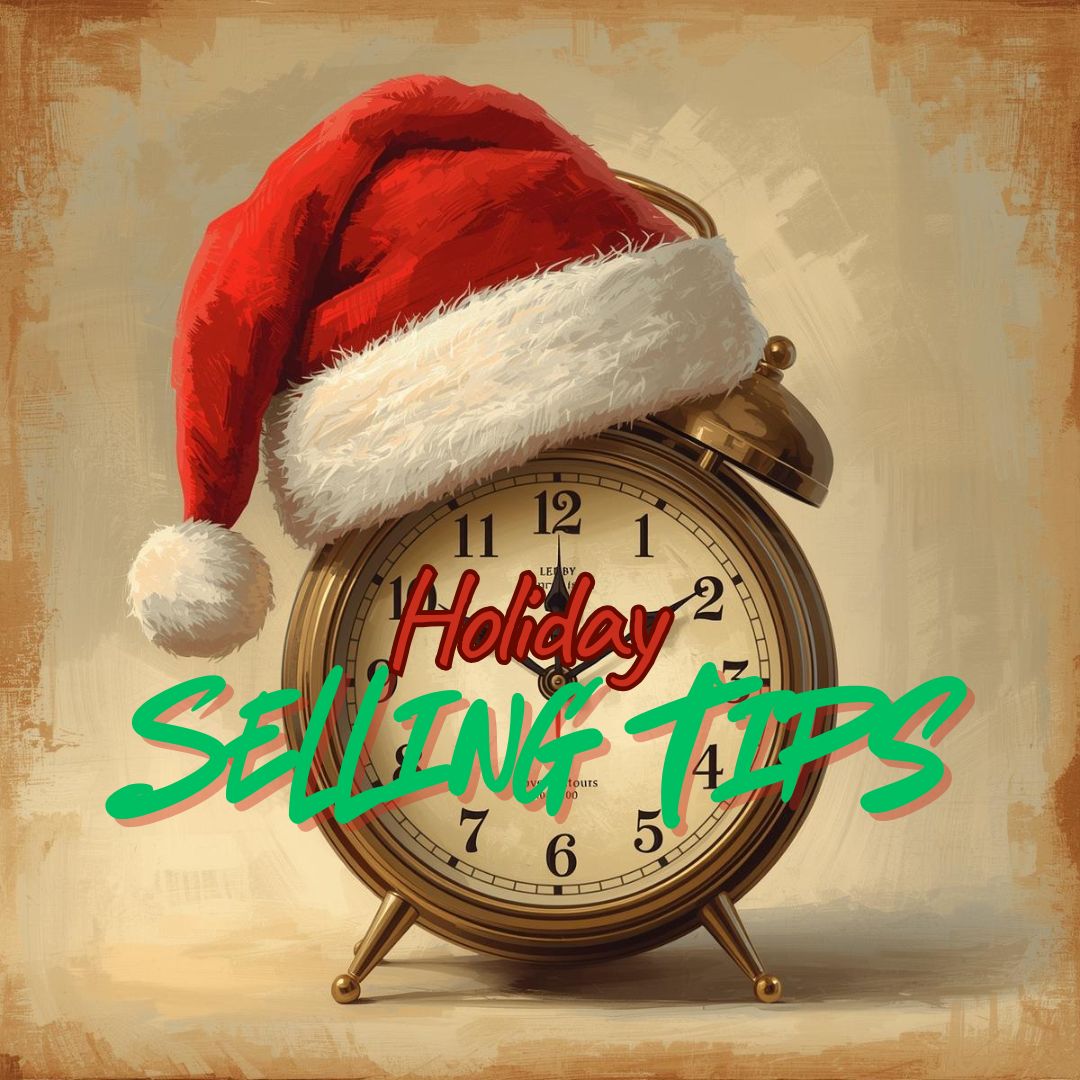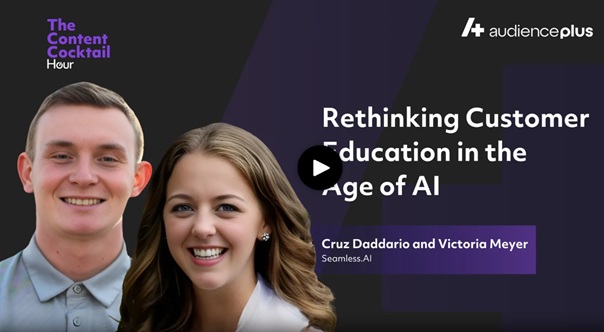Want to learn tried and true ways to get insurance leads? Here are some of the best ways to do insurance lead generation using golden nugget advice from insurance prospecting experts.
Usually, people aren’t looking for insurance agents. Insurance agents are usually the ones doing lead generation to build their client base.
Finding success in the insurance industry is largely based on the amount of effort you put into it.
Whether you’re an insurance agent looking for new leads, or looking for an insurance company lead, use this guide to insurance lead generation to learn how to streamline your prospecting efforts.
Here, you’ll learn:
- What is insurance lead generation?
- Challenges of doing lead generation in the insurance industry
- Actionable tips on how to do lead generation, from experts
📕 Ready to dive into insurance sales prospecting? Explore our comprehensive directory of the top insurance companies in the U.S., with all the contact information you need to start building your prospecting lists.
What is insurance lead generation?
Insurance lead generation is the process of getting more customers to buy insurance plans from agents who earn commission and from insurance companies with multiple insurance plan/package options.
Doing lead generation in the insurance industry could also mean that you’re looking for companies in the insurance industry.
Lead generation in the insurance industry is all about finding the right clients who will buy insurance plans or packages from you, whether your leads are large insurance companies or they fit your ICP of your dream insurance clients.
What to expect when doing lead generation as an insurance agent
Before you set out finding clients without a plan or strategy in place, you need to understand the insurance industry as a whole–from the perspective of insurance customers.
Most everyone can benefit from insurance, but not everyone has it.
Why? According to this CDC report on uninsured adults aged 18-64, there are many reasons.
Here are a few key reasons why many people are uninsured:
- Insurance can be expensive for most people (73.7%)
- Many people are ineligible for insurance plans (25.3%)
- People think they simply don’t need or want it (21.3%)
- People can’t find insurance plans that meet their needs (18%)
- Insurance is complex and hard to understand (for the general population) (18.4%)
As an insurance agent or company, you need to understand the context of why people aren’t buying insurance plans.
This is your starting point to understanding how you can start tailoring your insurance offerings to potential new clients.
Another factor to consider when doing lead generation in the insurance industry is competition.
You might be able to build a list of lead contacts to start reaching out to, but you need to know how to differentiate your insurance offerings from competing insurance companies.
Can you offer more coverage with less costs? Or do you provide more flexibility with your plans?
Whatever you believe is your unique value proposition, showcase that value to potential leads at the first point of contact.
The good news is, there are several ways to get more high-quality leads for your insurance business, whether you’re an independent agent or employed by a single insurer.
Step-by-step guide: How to get more insurance leads
1. Start with an ideal customer profile for your insurance offerings.
If you’re an independent insurance agent, you might have a mix of insurance policies from different insurers. That means you’ll probably have a few different target customer profiles for each insurance policy type.
If you’re a “captive” agent, you’re probably only selling policies for a single insurer. You should have a high-level idea of the type of people your insurer usually sells to.
The key to starting with an ideal customer profile is to start zeroing in on insurance leads that match with the people you’re looking for.
However, the great thing about selling insurance policies is that you can be flexible. Even if some leads don’t exactly match what you’re looking for, you can still try and tweak your insurance offerings to capture high-quality leads.
2. Choose the right lead generation channels to find the right customers.
If you’re an independent agent, you’re most likely starting from scratch.
If you’re a captive insurance agent, your employer might provide you a list of leads. This might feel like a leg up from starting from scratch, but captive agents still need to do some lead generation on their own.
Don’t know where to start?
✍️ Here’s a list of insurance lead generation channels you can use:
- Insurance lead generation websites: List your insurance services on insurance websites or directories where consumers can compare quotes.
- Referral programs: Give your current insurance clients an incentive to refer their friends and family in the form of discounts or rewards.
- Lead generation tools: AI-based lead generation search engine tools like Seamless.AI can help you build insurance lead lists online in a few clicks.
- Insurance networking events: Show up and engage with other insurance professionals, referral resources, and potential clients at industry conferences, trade shows, and networking events.
- Insurance webinars and workshops: Host free online webinars or events to help educate more potential clients on insurance.
- Partnerships with complementary businesses: You can partner with real estate companies or financial advisors to cross-promote your offerings or exchange referrals.
Lead generation in the insurance industry isn’t just about word-of-mouth marketing (although it is a powerful tactic!).
The best approach to generating more insurance leads is to take an omnichannel approach. Make use of multiple lead generation channels to scale your search far and wide.
List of insurance lead generation websites
There are a few more common and popular insurance lead generation websites where you can list your services beyond a Google business directory listing.
📈 Optimize your insurance business listings on these websites and directories:
Buying insurance leads
Unlike some other industries, it’s pretty normal to buy lead lists in the insurance industry.
Like we mentioned before, most insurers with captive agents will give them lead lists to start with. Insurance companies usually buy these lists as a routine part of their marketing efforts.
If you’re an independent insurance agent building your leads list, finding your dream clients from scratch can be difficult. Plus, buying leads may not be in your budget if you're just starting out.
Don’t just rely on word-of-mouth referrals (although these are the best!).
Lean into social media marketing and search engine marketing on platforms like Facebook, Instagram, Google Ads, and more.
You can pay to run ads on these platforms to generate leads based on various demographics, such as location, age, interests, and more.
3. Use AI for lead generation tools, chatbots, and lead scoring.
Generating insurance leads on your own can be a huge task. It’s time-intensive, labor-intensive, and ripe for missed opportunities.
Especially if you’re an independent insurance agent, knowing how to make-do with limited budgets and resources is important.
But being “scrappy” should never be “crappy”. Instad, scrappy lead generation is all about speed.
With the help of AI lead generation tools like Seamless.AI, you can find hundreds or thousands of insurance leads with their contact information all ready for you in a few minutes. It’s basically like using a search engine tool designed to source leads for you.
Here’s a sneak peek of what it looks like to find insurance leads in Seamless.AI:

You can easily search for insurance leads through Seamless.AI’s contact search tool by filtering for contacts in a specific area or location.
For example, you might be looking for insurance leads in a specific city, like Atlanta, Georgia. You could filter your insurance lead search by the entire greater Atlanta area, specific cities in Atlanta, or by other cities in Georgia.
Searching by location is only one of many filters available in the tool, but it’s a good place to start when gathering insurance leads near you.
How to use an AI chatbot to get more insurance leads
Another less-obvious AI tool that helps with gathering insurance leads is a chatbot.
If you don’t have the budget for a sales intelligence tool after your free trial, you can set up a free chatbot tool to identify a user’s intent and gather data from these conversations.
Set up a chatbot workflow with prepared content, links, and preloaded answers to really streamline the whole process.
Once you set that up, you’re bound to get some high-quality, high-intent insurance leads–without lifting a finger.
Lead scoring models for insurance lead generation
AI isn’t just useful for gathering leads. You can also use AI tools to help you score and qualify leads.
Here’s why you should use AI for lead scoring:
You might be able to generate hundreds or even thousands of insurance leads, but not all of them are convertible.
You need to do lead scoring, which is figuring out which leads to prioritize based on their likeliness to convert and become customers.
Scoring and prioritizing leads helps insurance companies and agents spend more time on the leads that are more qualified and likely to buy policies, and less time wasted pursuing unqualified leads.
Traditional lead scoring models in the insurance industry generally only focus on top-of-funnel leads, which are insurance leads who are only at the awareness stage of the customer buying journey.
You don’t get the full picture of lead scoring throughout the entire customer journey with traditional insurance lead scoring models.
That’s where predictive lead scoring models for insurance leads come in.
Predictive lead scoring uses machine learning and technology to calculate a comprehensive lead score.
You can see the difference between traditional lead scoring vs. predictive lead scoring in this infographic from IntelliArts.

🔑One key difference to remember is that with traditional insurance lead scoring, you’ll only get a vague description of the lead ranking (low, medium, high). With predictive lead scoring, you can get a calculation of the probability that the lead can be converted to a customer.
This precision of lead scoring with predictive scoring helps you zero in on insurance leads that matter most.
💼 Case in point: You can use Seamless.AI’s Buyer Intent Data tool to keep tabs on key buyer signals, topic keywords, and to measure the likelihood of a lead to convert.
You’ll get a snapshot of each insurance lead with unique scores for each topic you’ve subscribed to get alerted on, with one comprehensive buyer intent score that underlines the likelihood of a contact that’s ready to buy.
👇 Here’s an example of what it looks like:

Seamless.AI’s intent data is:
- Sourced from a network of over 5,000 B2B companies
- Powered by a natural language processing (NLP) engine to evaluate content across every topic
- Built with over 12,000+ topics
- NOT based on “bid stream” signals
- Refreshed on a weekly basis
- Designed to keep track of historical data and behaviors to alert you of any surge signals
Basically, you can use AI tools or sales lead intelligence tools to help you at various stages of the sales pipeline, not just for lead generation.
Our suggestion? Try it out for yourself in Seamless.AI with a free account and 50 free credits to get started.
📕 Related: Learn more in “What is Lead Scoring?”
4. Personalize, personalize, personalize.
The path of all insurance lead generation tactics lead to one common road: Personalization.
Every effort you make in insurance sales when gathering leads is to personalize and offer unique insurance policies that bend to customers’ needs.
People buying insurance want to know how an insurance policy can change their life, whether it be for health, auto, life, or anything else.
Paint a clear picture of the insurance policy benefits, both immediate and long-term benefits.
It’s also important to note that different customers have different needs or wants for insurance.
Some people can automatically opt into their employer-sponsored insurance policies, while others have to buy independent policies on their own.
Some customers might only look for minimum coverage policies, while another person might have a severe health condition that requires a full coverage health insurance plan.
The key is to tailor your pitch to insurance leads by understanding:
- How leads currently feel about insurance
- What level of experience they have with insurance
- How much coverage they’re looking for
- What unique situations affect the type of insurance policy they might choose
- Their key wants, challenges, and pain points when it comes to insurance
In all honesty, your entire goal with your insurance sales pitches is to put leads at ease and get them to trust you. Without understanding the context of their unique needs, personalizing your pitch won’t be easy.
5. Build your personal brand as an insurance agent or company.
So how do you build trust with insurance leads–especially with inbound leads?
Getting inbound leads in the insurance industry whether you’re a captive or independent agent relies on word-of-mouth marketing.
You can do word-of-mouth marketing through a referral program or through your own branded online presence.
Establishing trust through your branded presence can look like:
- SEO-focused content marketing: Become a trusted online resource with blog articles, landing pages, and other pieces of content on your website by optimizing for SEO keywords.
- Social media marketing: Create content on Facebook, LinkedIn, TikTok, Twitter, Reddit, or any other social platform to start engaging with potential customers. Showcase success stories, share educational content about insurance, and get your name out there to capture a bigger audience.
- Partner with complementary businesses: Create an affiliation with your insurance policies with another well-regarded business that goes hand-in-hand with insurance. This might look like partnering with a real estate agent who can help you sell home insurance, or partnering with financial advisors who can help promote your life insurance policies.
6. Nurture and convert your leads.
Don’t just think about gathering leads, nurture and convert your insurance leads to get them to become your dream customers.
You’re not just selling an insurance policy to a lead. You’re selling them solutions for lower out-of-pocket costs, peace of mind for unexpected situations, and a safe back-up plan for their future.
Nurturing and converting your leads boils down to knowing how to sell a promised experience of positive emotions and outcomes from your insurance solution–not just a document that outlines an insurance policy.
The hard part is selling this promised experience that may never happen.
In John Savage’s words (insurance industry legend):
“Because we essentially sell promises of a future benefit that may not ever be realized, the sale of insurance is very different than any other type of sale,” Agents may “have difficulty applying sales techniques that are not specific to the insurance business.”
Nurturing insurance leads throughout the sales pipeline based on this potential benefit can be difficult.
Here are some ways you can successfully nurture your qualified insurance leads:
- Build your emotional intelligence and be personable.
- Always follow up and retain current insurance clients.
- Always be ready to answer questions and know how to respond to sales objections.
7. Comply with insurance lead generation regulations.
The last thing you want to happen when gathering insurance leads is to get hit with a data privacy fine.
When selling to new insurance clients, you’re usually dealing with sensitive personal information, whether it’s their contact information, their financial situation, or their personal life events like health issues or car accidents.
This step to insurance lead generation is simple: Comply with data privacy regulations to establish trust with your leads.
If you’re in the healthcare insurance industry, you should be compliant with HIPAA to protect patients’ personal information.
If you’re dealing with a lot of financial data, you should comply with the Gramm Leach Bliley Act (GLBA) to make sure companies are tracking when insurance agents access sensitive customer records.
The list goes on, but here are a few data privacy laws and regulations you should know for the insurance industry:
- The General Data Protection Regulation (GDPR)
- California Consumer Privacy Act (CCPA)
- Personal Information Protection and Electronic Documents Act (PIPEDA)
- Sarbanes-Oxley Act (SOX)
- The Insurance Data Security Law
Insurance lead generation DO’s and DON’Ts
There’s a lot that goes into successful insurance lead generation, but here are some key takeaways to remember:
✅ Do…
- Integrate AI tools for insurance lead generation, nurturing, and conversion.
- Use multiple channels and platforms to market your insurance services.
- Sell a solution, not just a policy.
- Establish trust with leads by complying with data privacy laws, building your personal brand, and personalizing your pitch for each lead.
🛑 Don’t…
- Rely solely on traditional insurance lead scoring models.
- Rely on lead lists from your employer (if you’re a captive agent).
- Limit your lead generation to a single channel.
- Skimp on lead nurturing and conversion tactics.
















